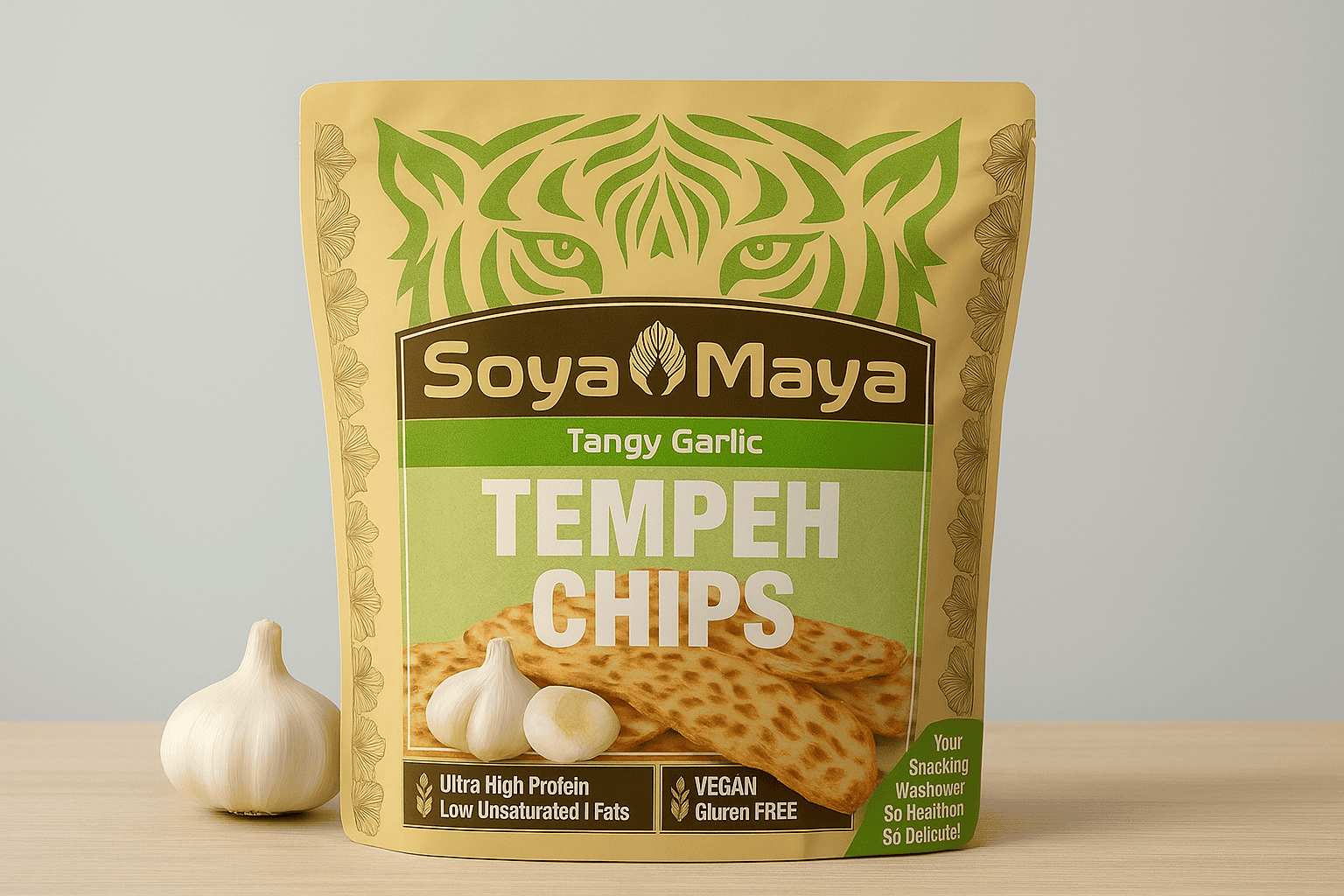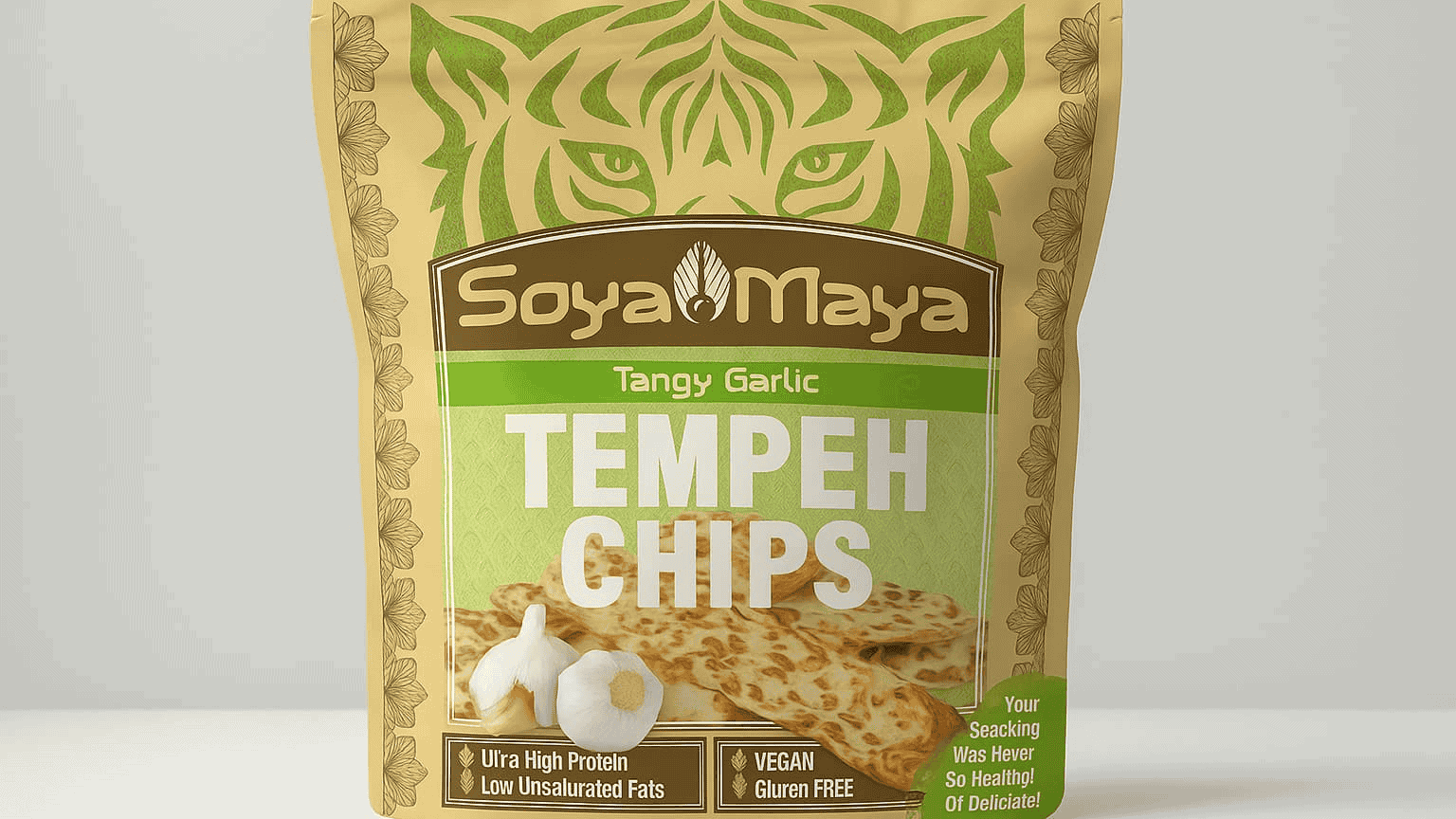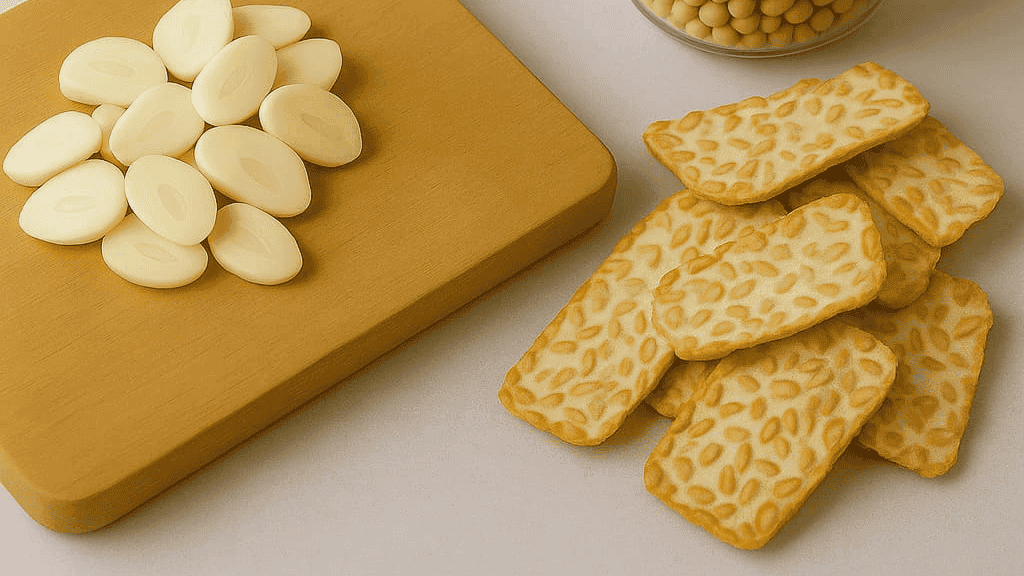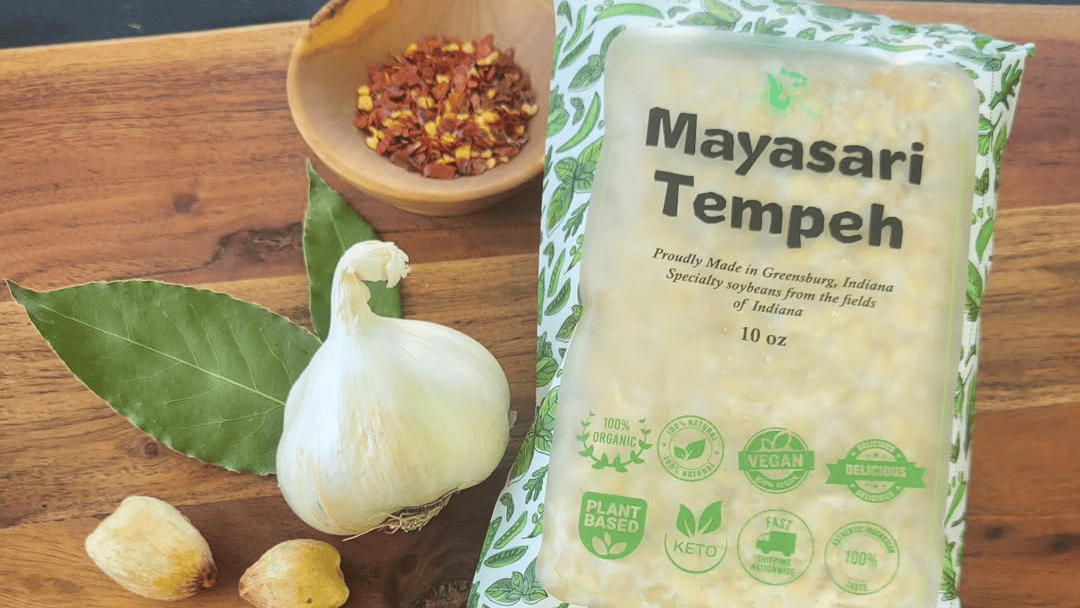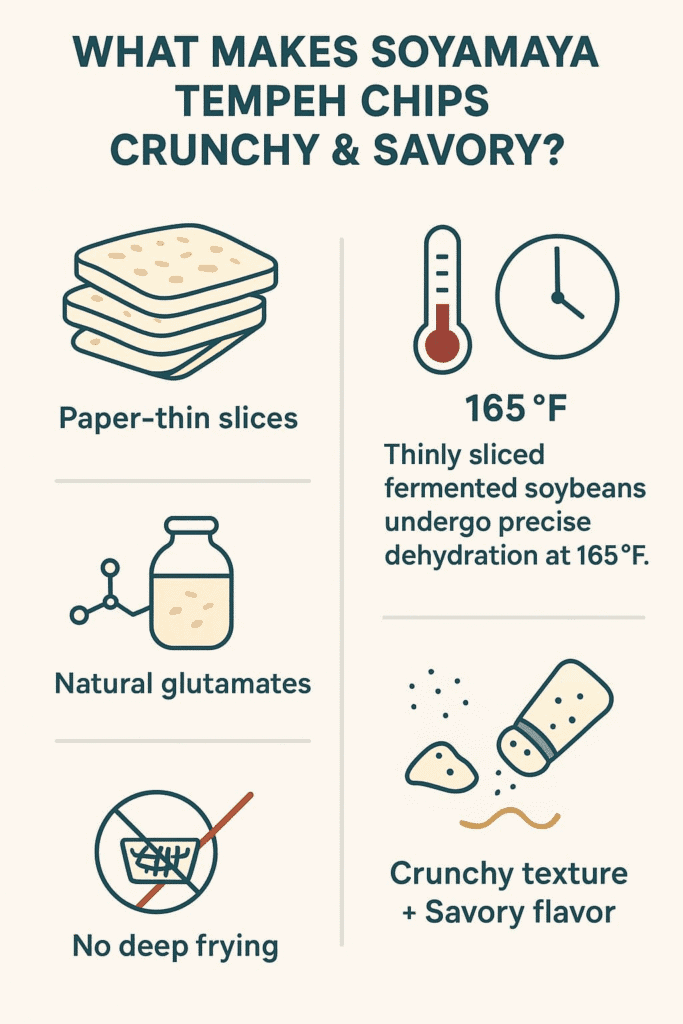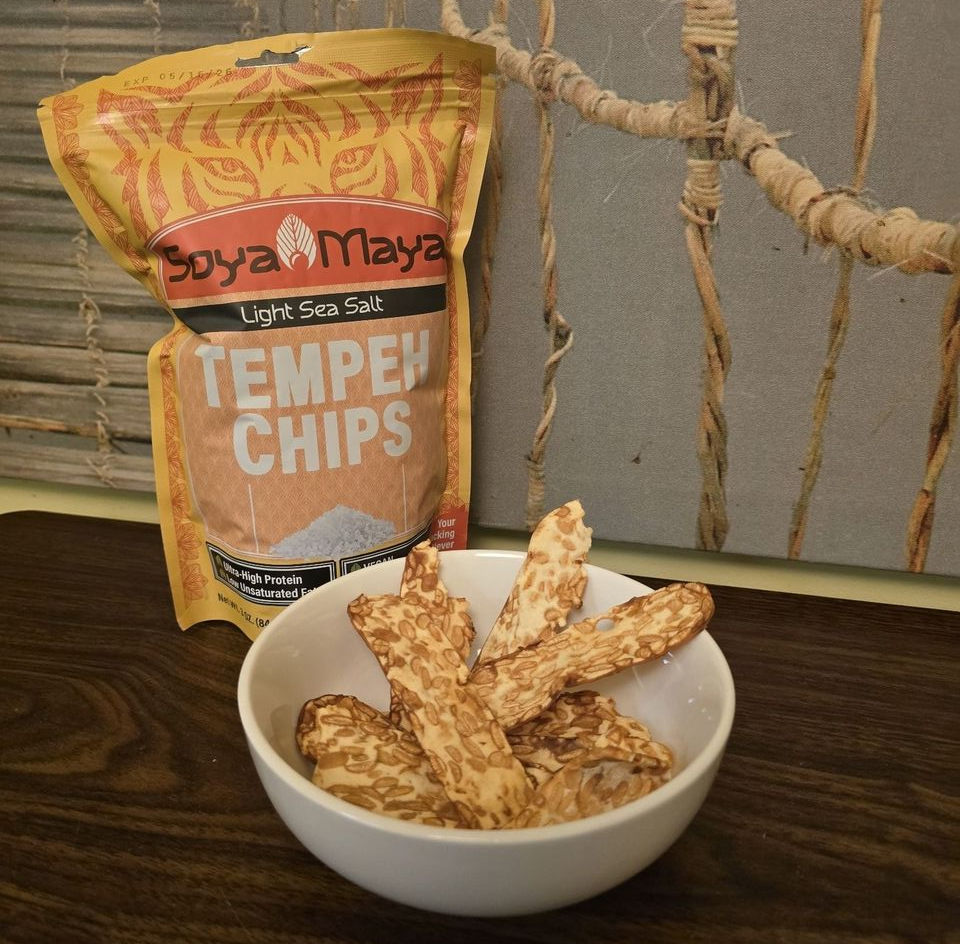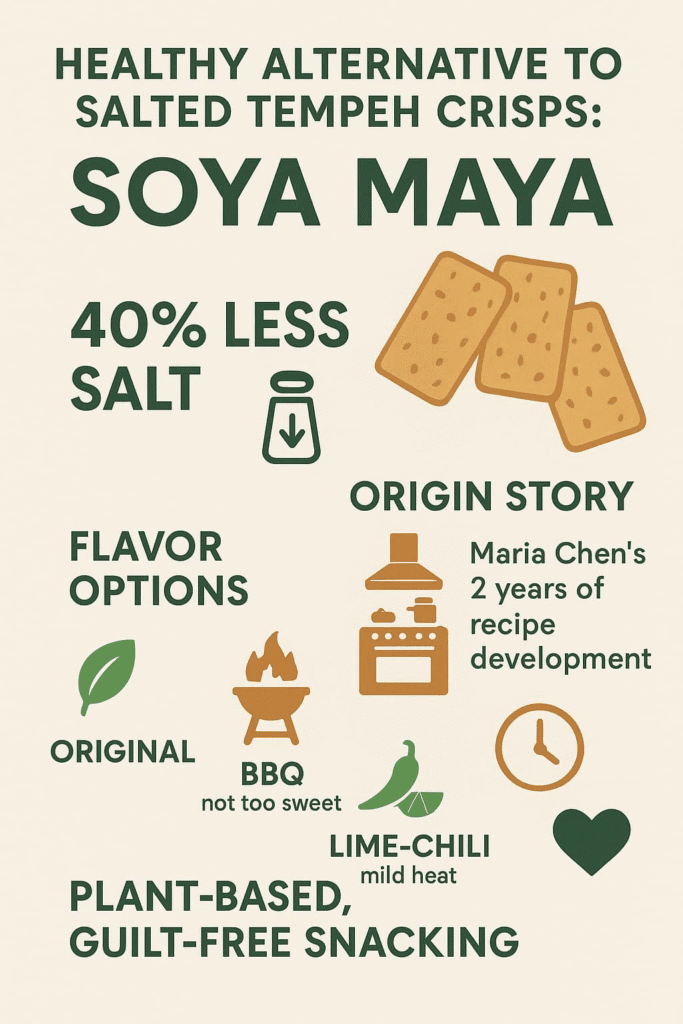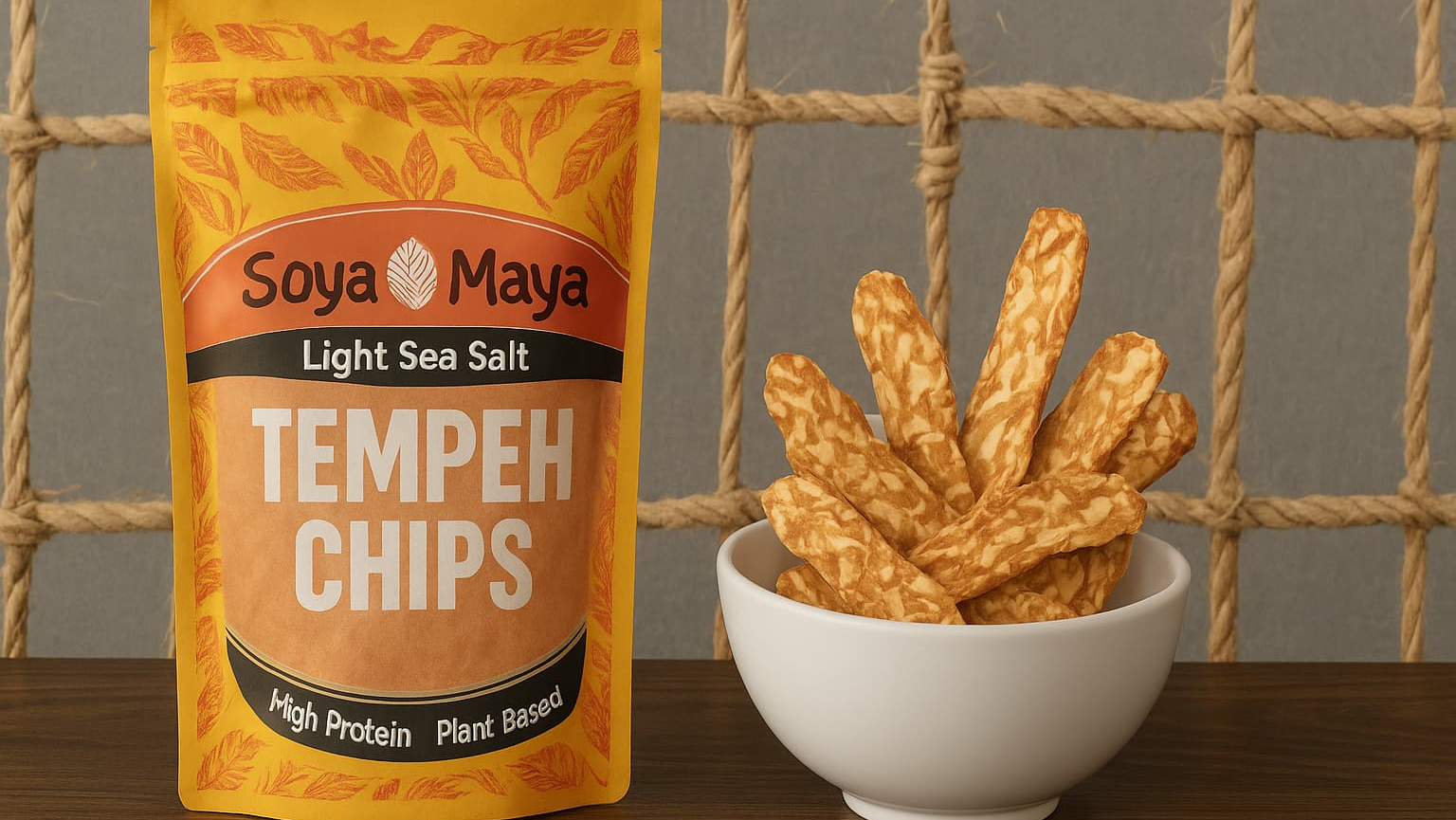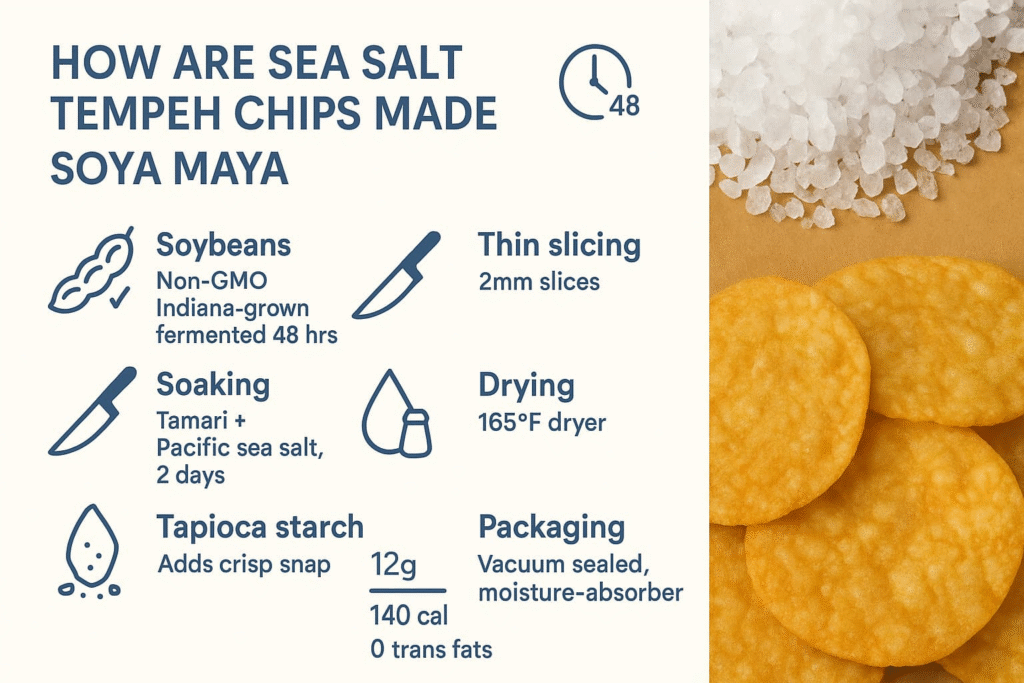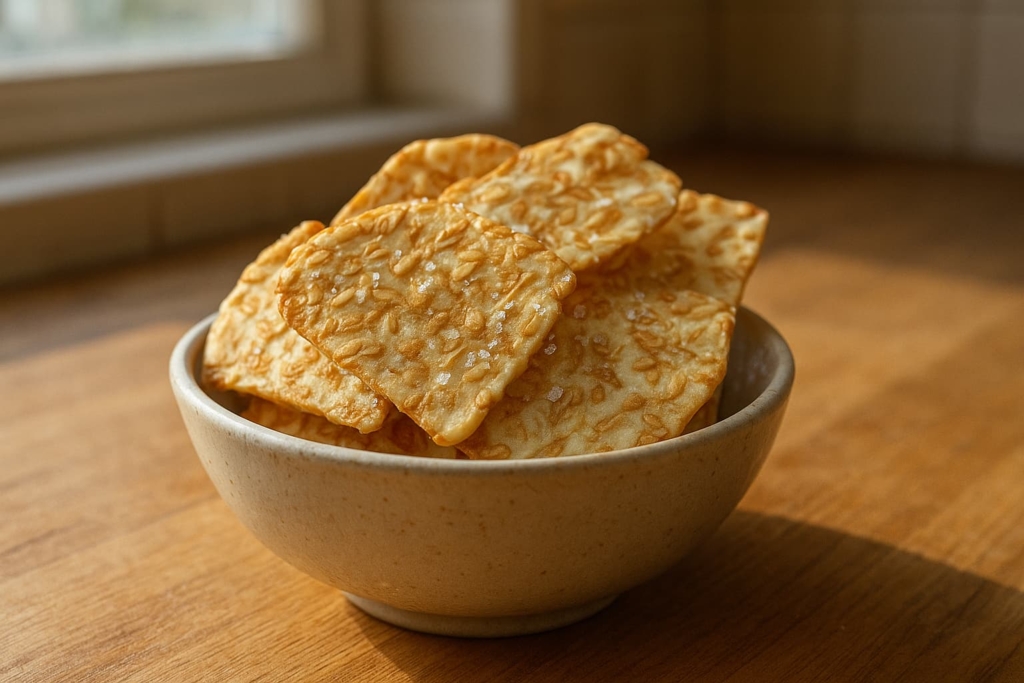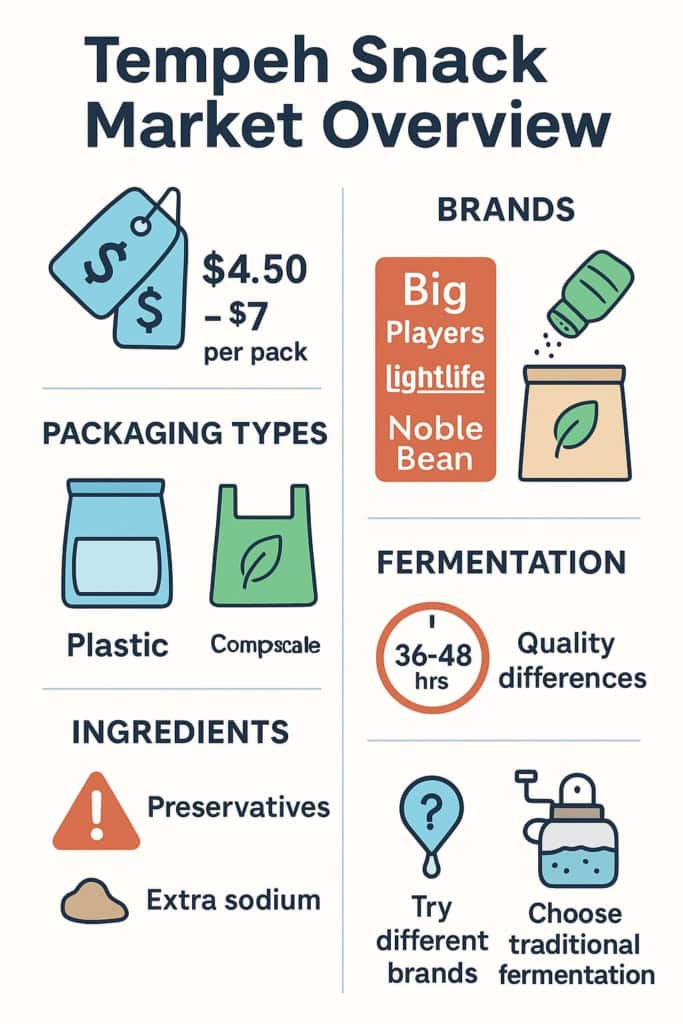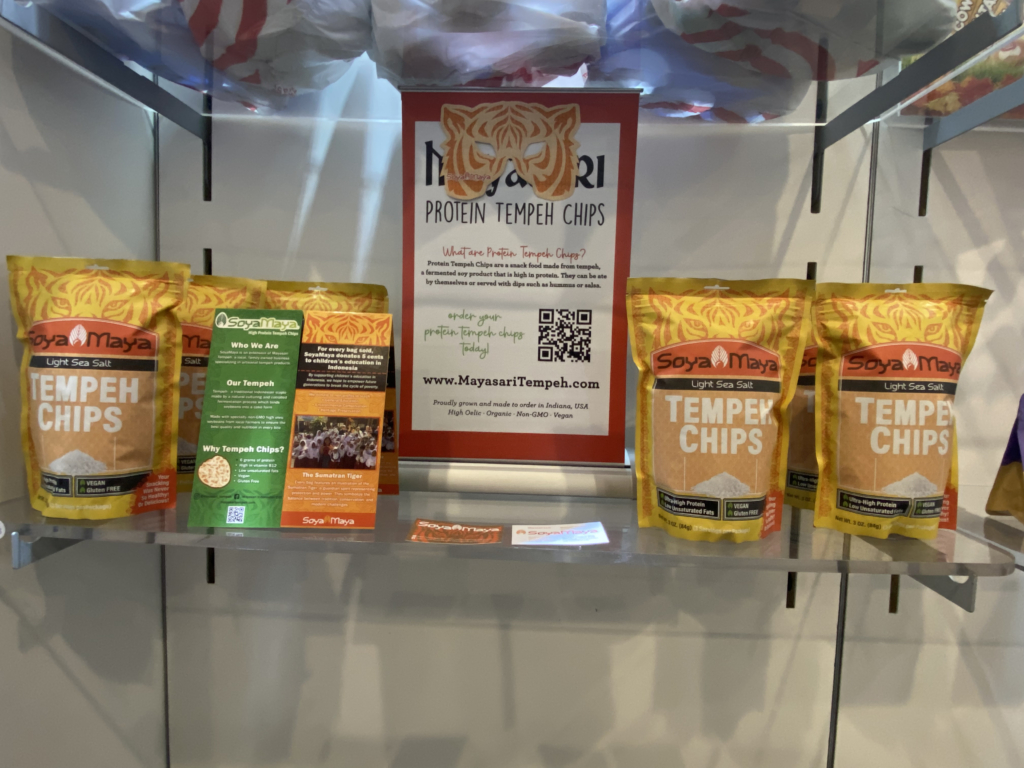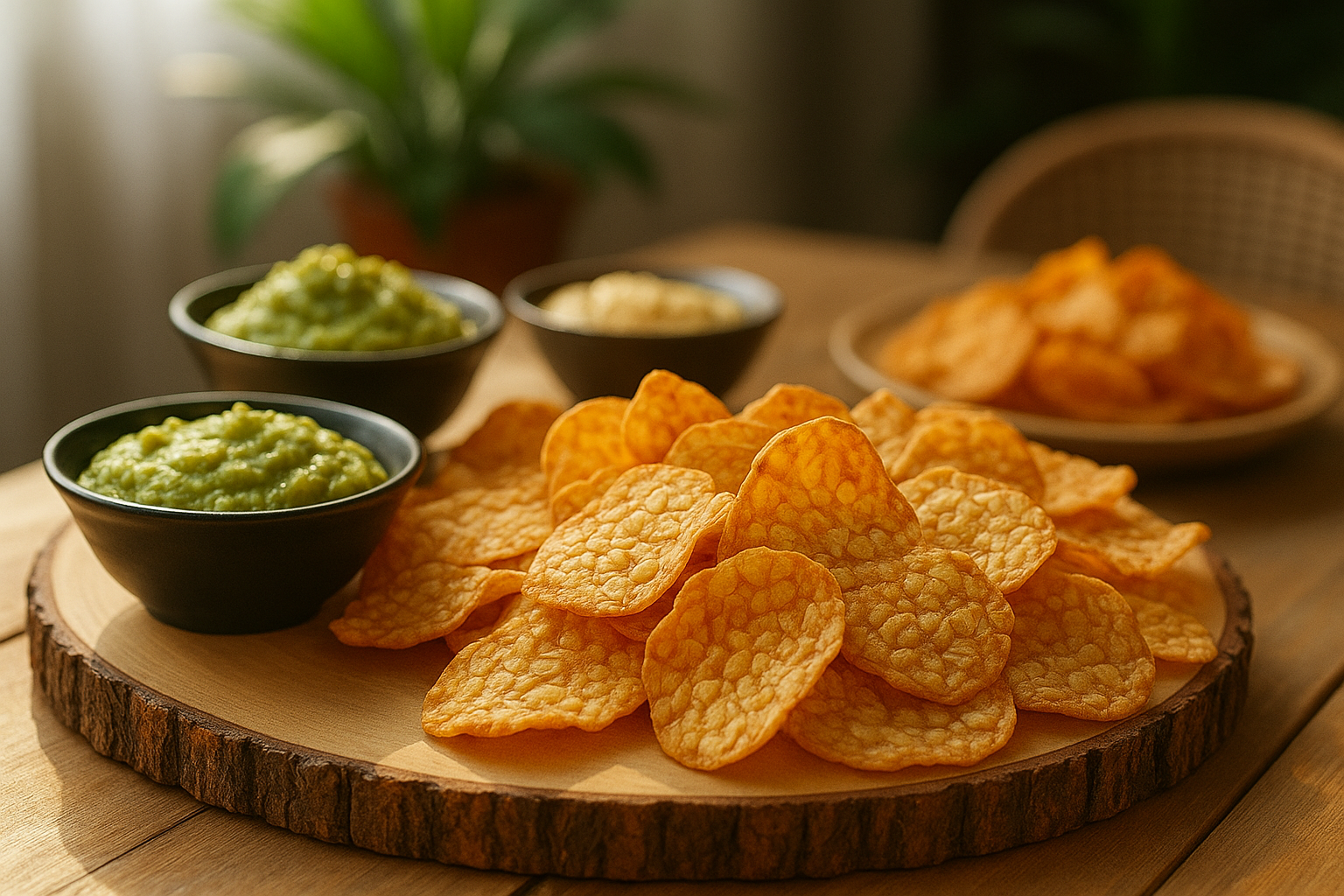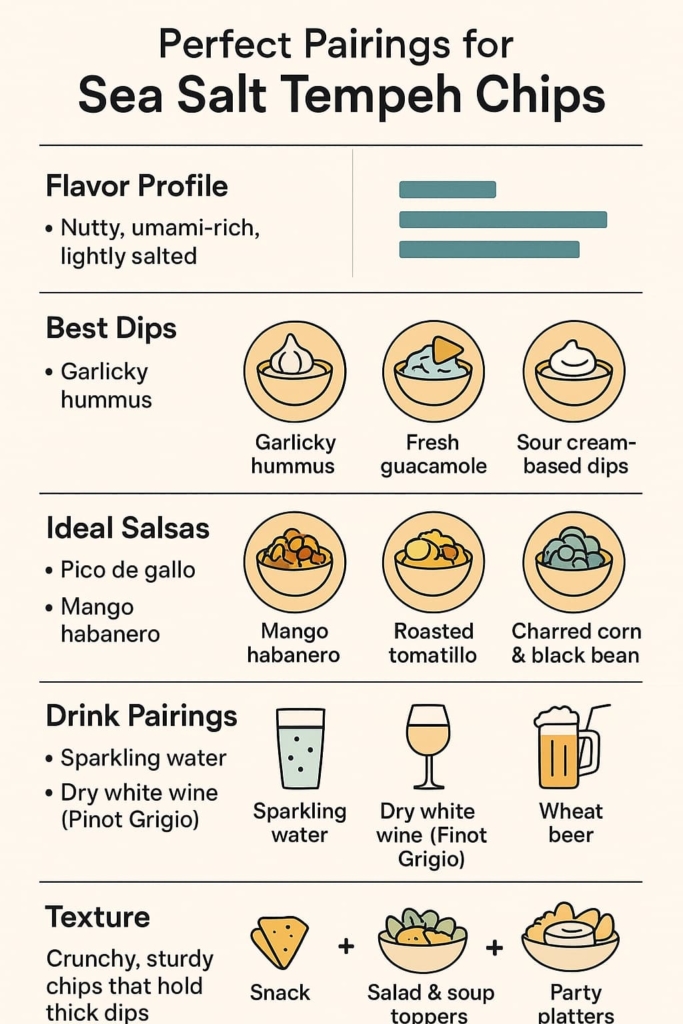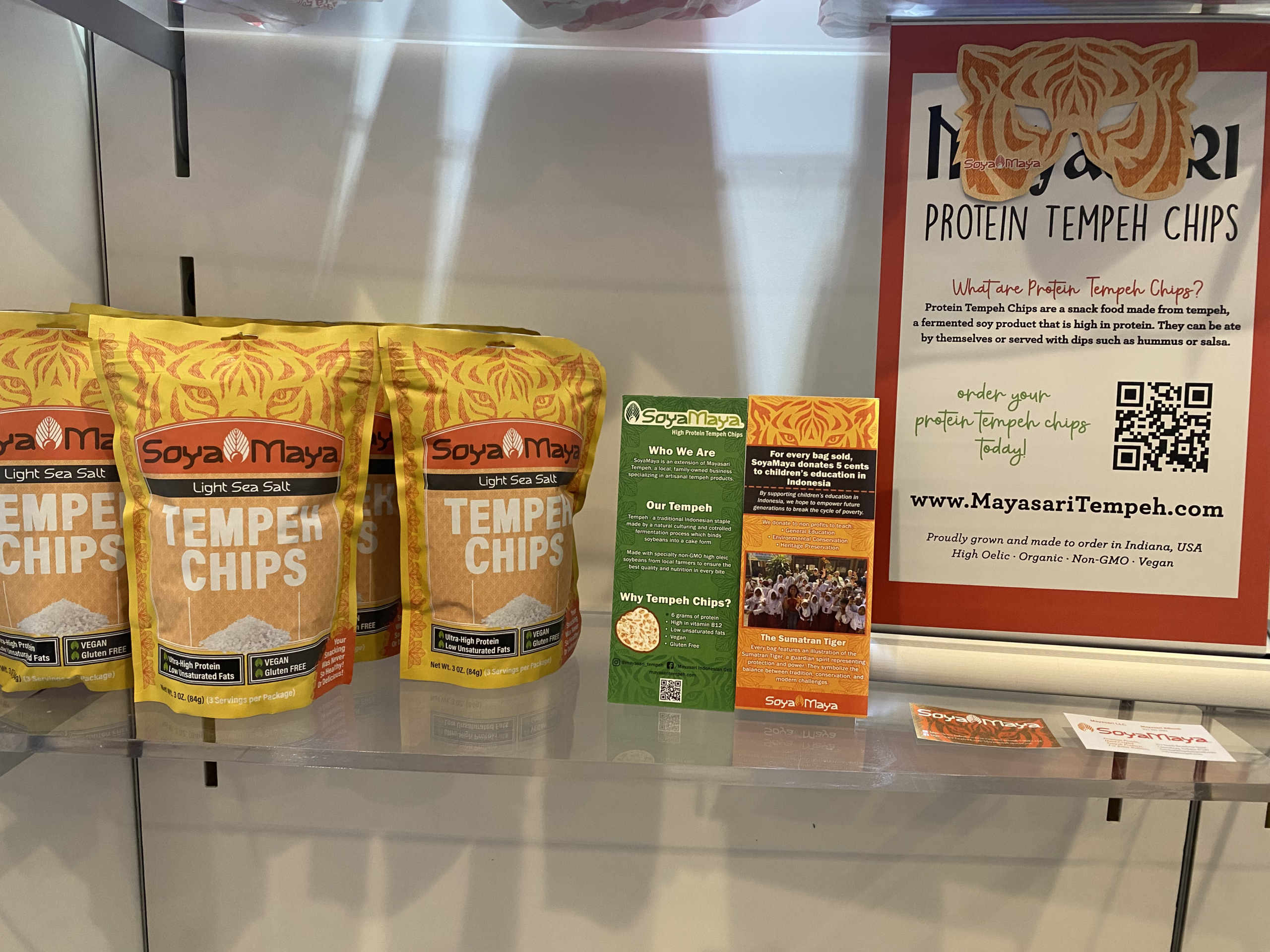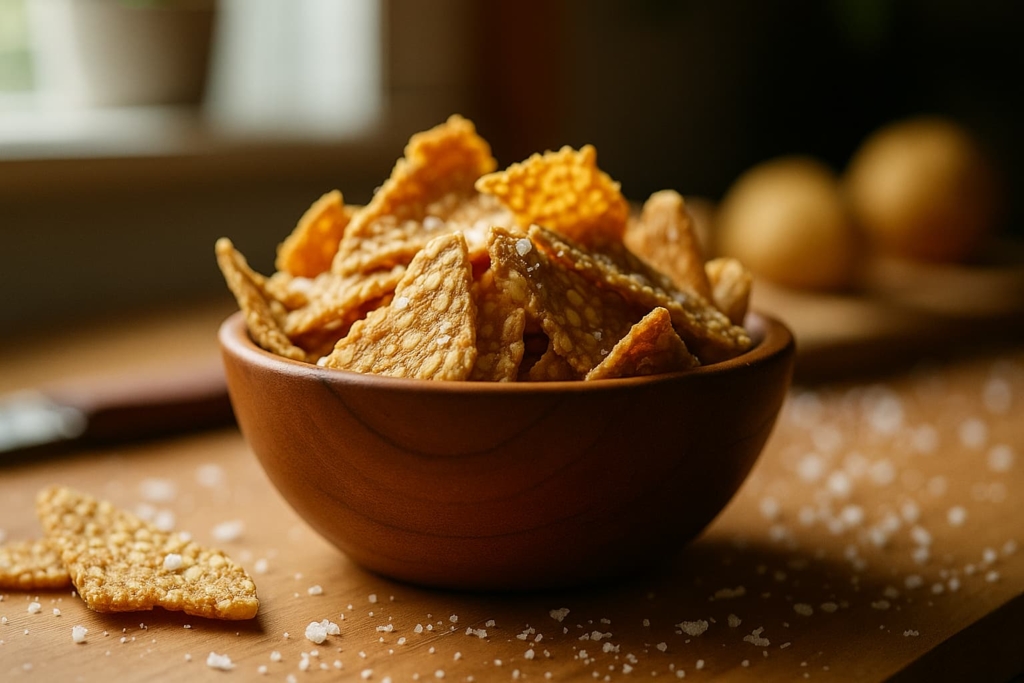What to expect from Tangy Garlic Tempeh Chips by SoyaMaya crunchy texture, zesty garlic, and a snack that keeps you coming back. Tangy Garlic Tempeh Chips from SoyaMaya aren’t messing around with their flavor. The garlic hits you right away – not that weak, artificial stuff you get in most snacks, but real, knock-your-socks-off garlic that might have you reaching for a mint afterward.
The tempeh base gives these chips this nutty, almost meat-like texture that’s different from regular chips, and there’s this zingy tang that sneaks up on you after each bite. They’re crunchy enough to satisfy that snack craving, but they’ve got way more going for them than just the crunch factor. Listen, if you’re curious about what makes these chips such a big deal, stick around – there’s more to the story.
Key Takeaway
- Each bite hits you with garlic that sticks around for a while.
- The crunch just works perfectly with that rich, garlicky flavor.
- For a snack, it’s pretty good for you with loads of protein and fiber.
Flavor Profile of Tangy Garlic Chips
Garlic Flavor Characteristics
The moment you tear open that crinkly bag, there’s this crazy punch of garlic that just smacks you right in the face. Not the fake stuff you’d get from those SoyaMaya knockoffs – this is the real deal.
These Tangy Garlic Tempeh Chips pack some serious tangy garlic flavor, the kind that might have your coworkers giving you side-eye at the office later. The garlic doesn’t mess around, it sticks around on your tongue for a while, but that’s probably what most garlic lovers are after anyway.
What’s pretty cool is how the garlic plays with the tempeh’s natural nuttiness (tempeh’s that fermented soybean stuff that’s been around forever in Indonesia). There’s layers to it – first you get hit with that zingy garlic blast, then this earthy, almost mushroomy thing kicks in. The flavors kind of dance around each other, and somehow it just works. The kind of snack that makes you keep reaching into the bag until you realize, oops, you’ve eaten the whole thing.
Complementary Seasonings
SoyaMaya’s signature taste comes from an old recipe that’s been tested hundreds of times. Through years of testing, they found that some spices just work better together. The chips pack a punch with a mix of savory and slightly tart flavors that stick around – kinda like that one friend who won’t leave your party.
The essential seasonings:
- Garlic powder (about 1/4 teaspoon per serving)
- Onion powder, ground fine
- Ground coriander seeds, just enough to notice
- Sea salt (less than most snacks use)
The spices seep into every crack and crevice of the tempeh, and that’s what makes people keep eating them. There’s something oddly satisfying about how the flavors build up – first you get the garlic, then the onion kicks in, and finally that subtle coriander shows up at the end. Pretty much impossible to eat just one, which is probably why the bags empty so fast.
Spicy Variations
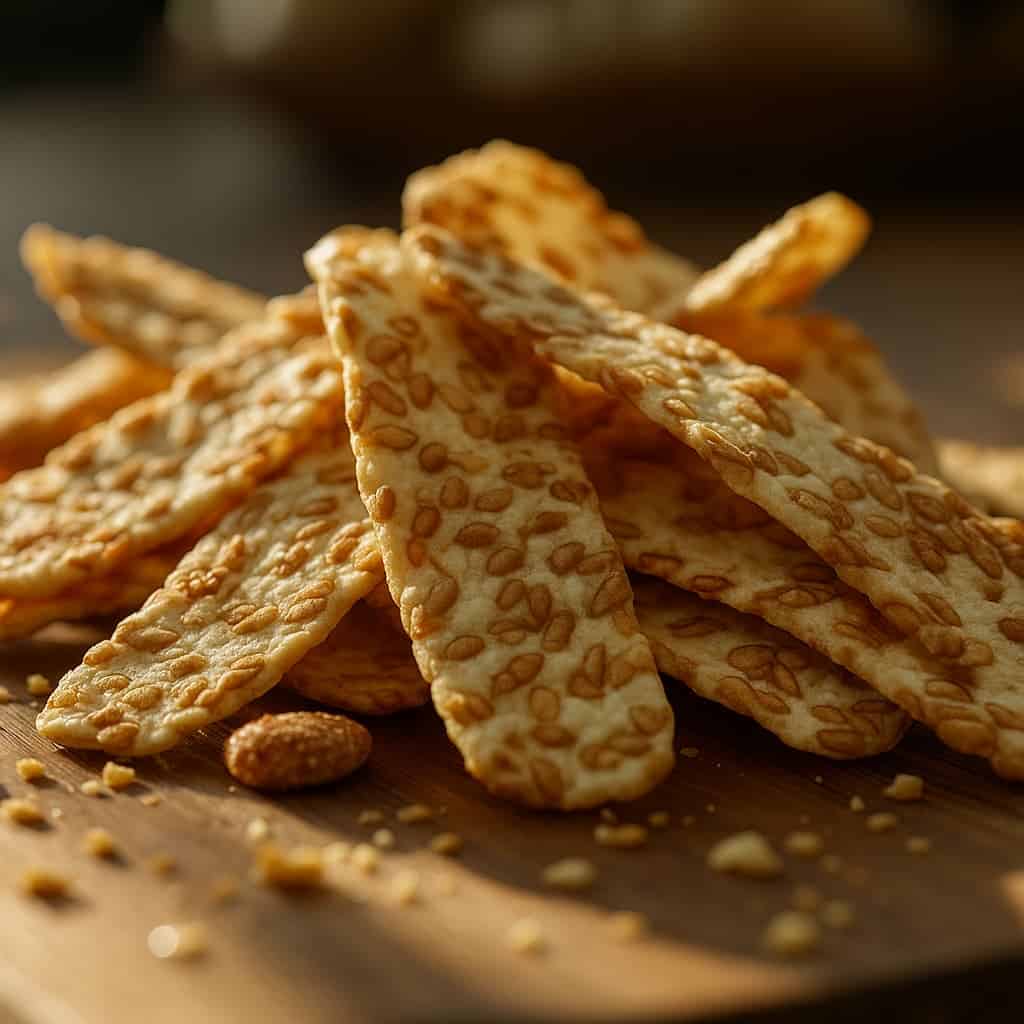
A kick of heat brings out something special in SoyaMaya’s tempeh snacks. The spicy versions pack just enough warmth to make you reach for another piece, and another, and another. For those who can’t get enough heat, there’s a whole lineup:
- Classic chili – hot but not overwhelming (made with dried Thai chilies)
- Garlic chili – a bit milder, with roasted garlic notes
- Extra hot – for the brave souls (uses ghost pepper extract)
The spices don’t mask the tempeh’s nutty taste – they complement it. Even the spiciest version lets you taste what’s underneath. And unlike most snacks that go heavy on artificial flavors, these use real chilies and seasonings (hand-ground in small batches). Nothing fake about that burn.
What’s nice is how the heat builds slowly, letting you actually enjoy the food instead of running for water after one bite. Perfect for sharing with friends who like it hot, or keeping a stash in your desk drawer for when afternoon hunger hits.
Texture and Preparation of Tangy Garlic Chips
Chip Texture Attributes
These chips might just be the crunchiest snack most people haven’t tried yet. Cut paper-thin (about 1/8 inch), they snap between your teeth with this awesome satisfying crackle. The tempeh’s natural graininess actually makes these chips work better than regular ones – they don’t get soggy like those cheap corner store brands do.
Each piece breaks apart in your mouth with this really nice crunchy and savory snap that kinda reminds you of kettle-cooked stuff, but different.
Better, actually. And weirdly enough, the texture helps carry all that garlicky tang through every bite, which is pretty neat. SoyaMaya’s definitely got something good going here – their chips have this sturdy crunch that holds up even when you leave the bag open for a while (though who really does that?). Like potato chips’ cooler, more interesting cousin.
Cooking Techniques
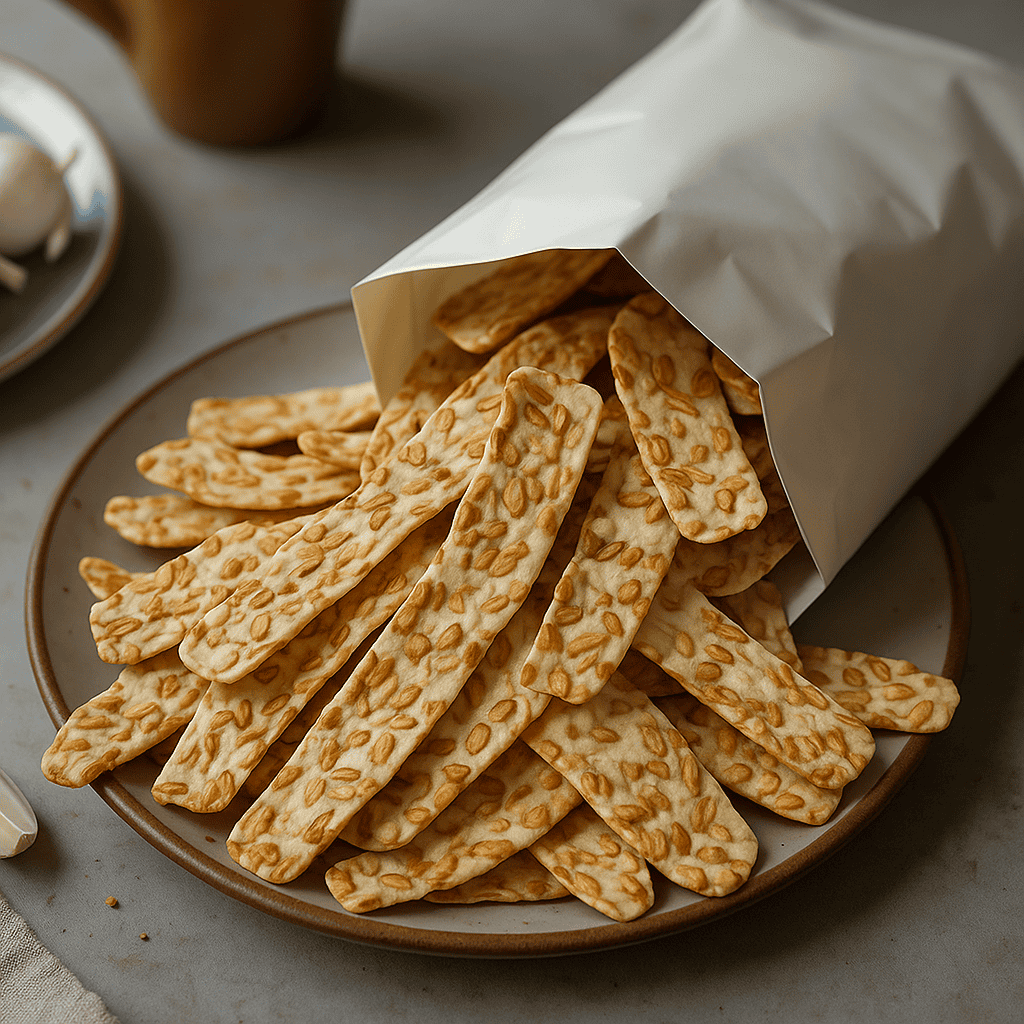
Baking brings out the best in SoyaMaya’s tempeh chips – they turn out crispy but don’t leave that heavy feeling you get from regular snacks. The chips come out golden brown after about 15 minutes at 350°F, and there’s something about that dry heat that locks in the natural nutty taste. For those who don’t mind a bit more indulgence, frying these chips creates an entirely different experience.
Key differences between baking and frying SoyaMaya chips:
- Baked chips stay fresh longer (up to 4 weeks)
- Fried version has that extra satisfying crunch
- Oil temperature sweet spot: 375°F for frying
- Baking uses 70% less oil
- Both methods keep the protein content high (12g per serving)
The chips might look simple, but the 48-hour fermentation process before cooking makes all the difference. Some folks say they can’t tell these aren’t regular potato chips – that’s probably the biggest compliment we could ask for. Each batch gets tested for that perfect snap before leaving the kitchen, making sure they’re exactly right.
Perfect for when you’re craving something crunchy but don’t want the usual greasy stuff.
Ingredient Impact on Texture
The fermentation creates texture you won’t find anywhere else. Something magical happens when soybeans transform into tempeh – they develop this dense, meaty bite that carries through to the final chip. When SoyaMaya’s team fries these blocks, they get this satisfying crackle that’s pretty much addictive.
The seasoning sticks differently too, probably because of the natural peaks and valleys that form during fermentation. You’ll notice:
- A sturdier crunch (thanks to 48-hour fermentation)
- Little pockets where the seasoning really settles in
- That satisfying snap when you bite down
- Texture that doesn’t go soggy, even after the bag’s been open
You might catch hints of the original tempeh’s nutty character underneath all that seasoning. It’s what makes these chips feel more substantial than your average snack, like you’re eating something real.
Nutritional Benefits of Tangy Garlic Chips
Protein Content
These garlic chips pack quite a punch when it comes to tempeh protein chips benefits (about 15 grams per 100-gram serving). SoyaMaya’s done something pretty cool with their Tangy Garlic Tempeh Chips – they’ve turned a boring snack into something that might actually fill you up. The whole tempeh thing makes sense, it’s basically fermented soybeans pressed into a cake-like form, and that’s what gives these chips their protein boost (1).
They’re nothing like those empty-calorie potato chips sitting in most people’s pantries. The protein content’s just right for people who need a quick pick-me-up between meals, or maybe gym folks looking for something crunchy that won’t mess up their macros. Plus, there’s that garlicky kick that just works.
Dietary Fiber and Probiotics
When tempeh ferments, something pretty cool happens – it gets tastier, sure, but there’s more going on beneath the surface. The bacteria doing all that work? They’re setting up shop right there in the chips, turning them into tiny probiotic powerhouses (each serving packs about 1 billion CFUs).
The fiber’s doing its thing too – nearly 7 grams per handful, which might explain why people don’t find themselves raiding the pantry an hour after snacking on SoyaMaya’s chips. That’s the fiber at work, hanging around in the digestive system, taking its sweet time. Makes sense when you think about it, nobody’s ever complained about tempeh not being filling enough.
Absence of Artificial Additives
SoyaMaya’s Tangy Garlic Tempeh Chips might just be that rare snack you can eat without squinting at the ingredient list. They’ve skipped all those weird add-ins – no MSG hiding in there, no preservatives that nobody can pronounce, and definitely none of those lab-made flavors. Just real ingredients that actually make sense.
The chips taste exactly like what they’re supposed to be, garlicky and a bit tangy, probably because that’s what’s actually in them. Really hits the spot when you want something crunchy but don’t feel like dealing with the guilt trip that comes after emptying a bag of regular chips. Perfect for those times when you’re trying to eat better but still want something that actually tastes good.
Consumer Expectations and Usage Occasions
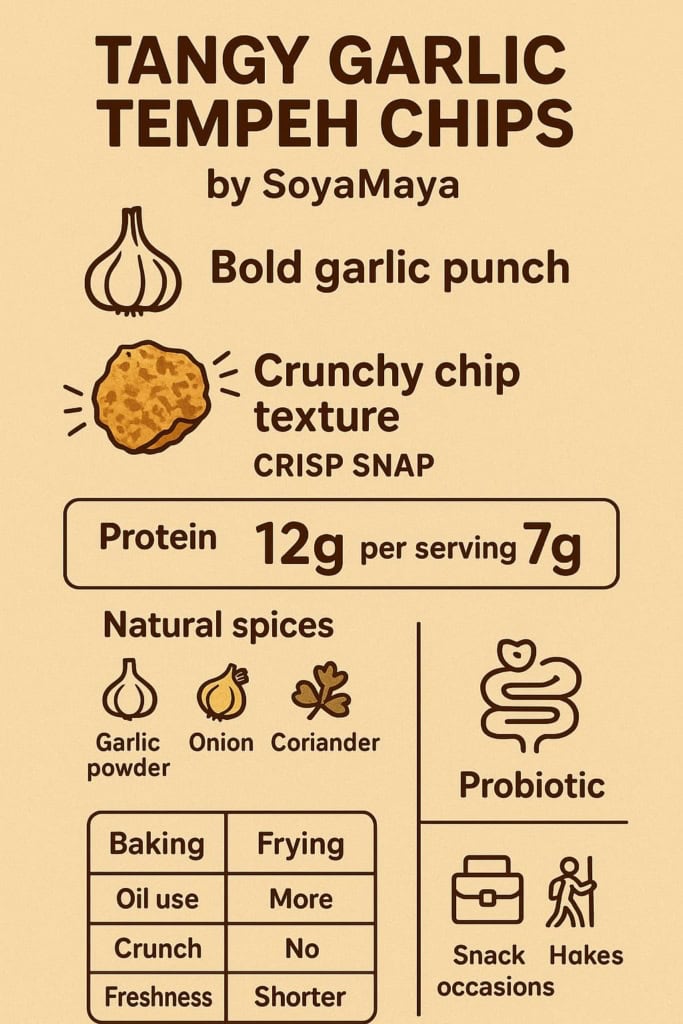
Flavor Experience and Satisfaction
People don’t just snack to fill their stomachs – they want something that hits different taste spots on their tongue. SoyaMaya’s Tangy Garlic Tempeh Chips pack a punch that most snackers want. The garlic kick comes through strong, but not overwhelming. Not too salty, not too plain.
Most people reach for these chips when they’re:
- Working late at the office (fits in desk drawers)
- During movie nights
- Road trips and hiking trails
- Quick lunch side dish
- After-gym protein boost
The tangy garlic flavor works best because it’s:
- Strong enough to satisfy cravings
- Not so intense it burns out after a few pieces
- Leaves a pleasant aftertaste
- Has that umami depth from fermented tempeh
- Doesn’t need dips or extra seasoning
Snack Versatility
These chips hit differently when you’re just hanging out on the couch, and they really make a party platter pop too. It’s hard not to keep reaching for more when they’re sitting next to some ranch dip or guac (store-bought or homemade, no judgment here).
People always ask about them at get-togethers, something about that nutty crunch that’s not quite like those SoyaMaya chips everyone’s used to. The best part? They work with pretty much any drink you’ve got in the fridge, though they’re especially good with an ice-cold beer. Perfect for those nights when the game’s on and friends drop by without warning.
Health-Conscious Consumer Appeal
SoyaMaya’s chips caught attention from shoppers who count every calorie and check ingredients with a magnifying glass (2). These crunchy snacks pack 12 grams of protein per serving, which might interest anyone who’s tired of those chalky protein bars.
Plant-based eaters probably won’t miss the fact that there’s no dairy, eggs, or other animal products in sight. Pretty much anyone trying to cut back on junk food but still wants something to munch on during movie night could grab these – they’re filling enough to stop mindless snacking, and there’s no weird artificial stuff to feel bad about later. Plus they don’t leave that heavy, greasy feeling that usually comes after demolishing a bag of regular chips.
FAQ
What makes tangy garlic flavor stand out in tempeh chips snack options?
Tangy garlic flavor adds a punchy, savory taste that works well with crispy tempeh chips. When paired with garlic seasoning or sea salt seasoning, it enhances the mild pungency of fermented soybean chips. This flavor profile makes plant-based snack options, like vegan snack and gluten-free chips, more exciting while keeping them a healthy snacking choice.
How do tempeh fermentation and natural ingredients improve SoyaMaya tempeh nutrition profile?
Tempeh fermentation using starter cultures like Rhizopus oligosporus helps lower phytic acid and boosts probiotic benefits and prebiotic fiber. Natural ingredients, non-GMO soybeans, and no preservatives or MSG support nutrient dense snacks that are high protein snacks, vegan protein sources, and low cholesterol snacks. This makes tempeh chips snack alternatives more digestible and health-friendly.
What are some health benefits of crispy tempeh chips with plant-based snack features?
Crispy tempeh chips provide a guilt-free snack option rich in protein, dietary fiber, and essential minerals like potassium, phosphorus, and calcium. They offer soy isoflavones and dairy-free calcium while keeping a healthy fat content. Low salt options and lightly seasoned chips make them a suitable snack for mindful eating, school lunch snack, or healthy lifestyle snack goals.
How can vegan superfood tempeh chips fit into a sustainable and allergy-friendly diet?
Vegan superfood tempeh chips made from fermented soybean chips are suitable for vegetarians and free from common allergens like dairy. Using natural spices and herbs, organic snack choice, and palm oil in moderation creates sustainable snack options. They are gluten-free flour-based, no artificial flavoring, and offer plant protein snack benefits, making them a mindful, Asian snack food alternative.
Conclusion
These tempeh chips pack a serious punch of flavor that’ll make anyone forget they’re actually good for you. Made right in Greensburg, Indiana, SoyaMaya’s Tangy Garlic Tempeh Chips combine that perfect crunch with a bold garlic kick that’s hard to put down.
They’re protein-packed (thanks to those high-oleic soybeans), and yeah, they’ve even got that rare plant-based B12 most folks don’t know about. Pretty much the perfect guilt-free snack for movie night or when you’re rushing between classes.
Ready to try some? Grab a bag (or maybe a few) at Mayasari Tempeh’s shop.
References
- https://en.wikipedia.org/wiki/Tempeh
- https://www.snapcalorie.com/nutrition/tempeh_chips_nutrition.html

